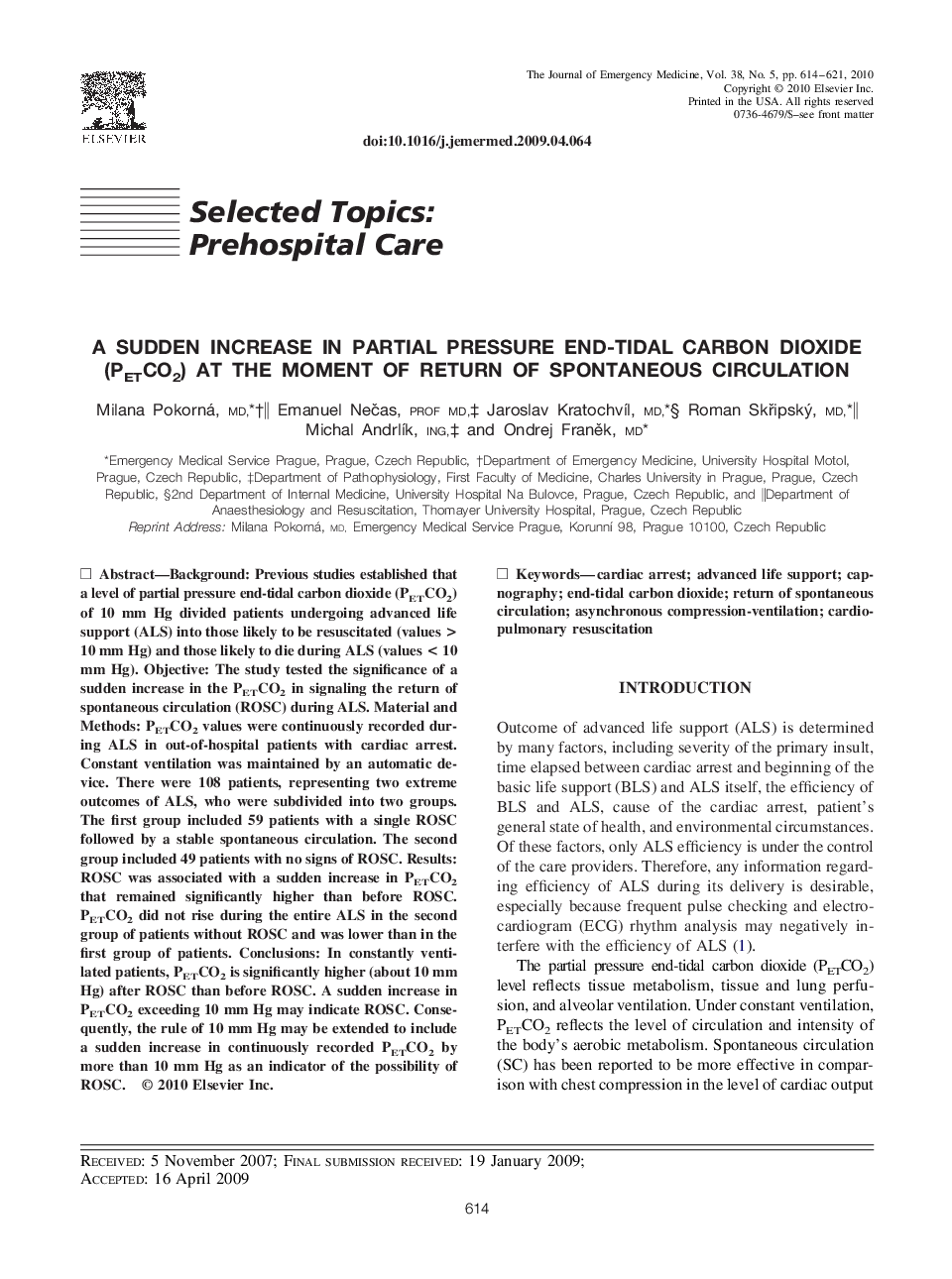| Article ID | Journal | Published Year | Pages | File Type |
|---|---|---|---|---|
| 3250538 | The Journal of Emergency Medicine | 2010 | 8 Pages |
Background: Previous studies established that a level of partial pressure end-tidal carbon dioxide (PETCO2) of 10 mm Hg divided patients undergoing advanced life support (ALS) into those likely to be resuscitated (values > 10 mm Hg) and those likely to die during ALS (values < 10 mm Hg). Objective: The study tested the significance of a sudden increase in the PETCO2 in signaling the return of spontaneous circulation (ROSC) during ALS. Material and Methods: PETCO2 values were continuously recorded during ALS in out-of-hospital patients with cardiac arrest. Constant ventilation was maintained by an automatic device. There were 108 patients, representing two extreme outcomes of ALS, who were subdivided into two groups. The first group included 59 patients with a single ROSC followed by a stable spontaneous circulation. The second group included 49 patients with no signs of ROSC. Results: ROSC was associated with a sudden increase in PETCO2 that remained significantly higher than before ROSC. PETCO2 did not rise during the entire ALS in the second group of patients without ROSC and was lower than in the first group of patients. Conclusions: In constantly ventilated patients, PETCO2 is significantly higher (about 10 mm Hg) after ROSC than before ROSC. A sudden increase in PETCO2 exceeding 10 mm Hg may indicate ROSC. Consequently, the rule of 10 mm Hg may be extended to include a sudden increase in continuously recorded PETCO2 by more than 10 mm Hg as an indicator of the possibility of ROSC.
